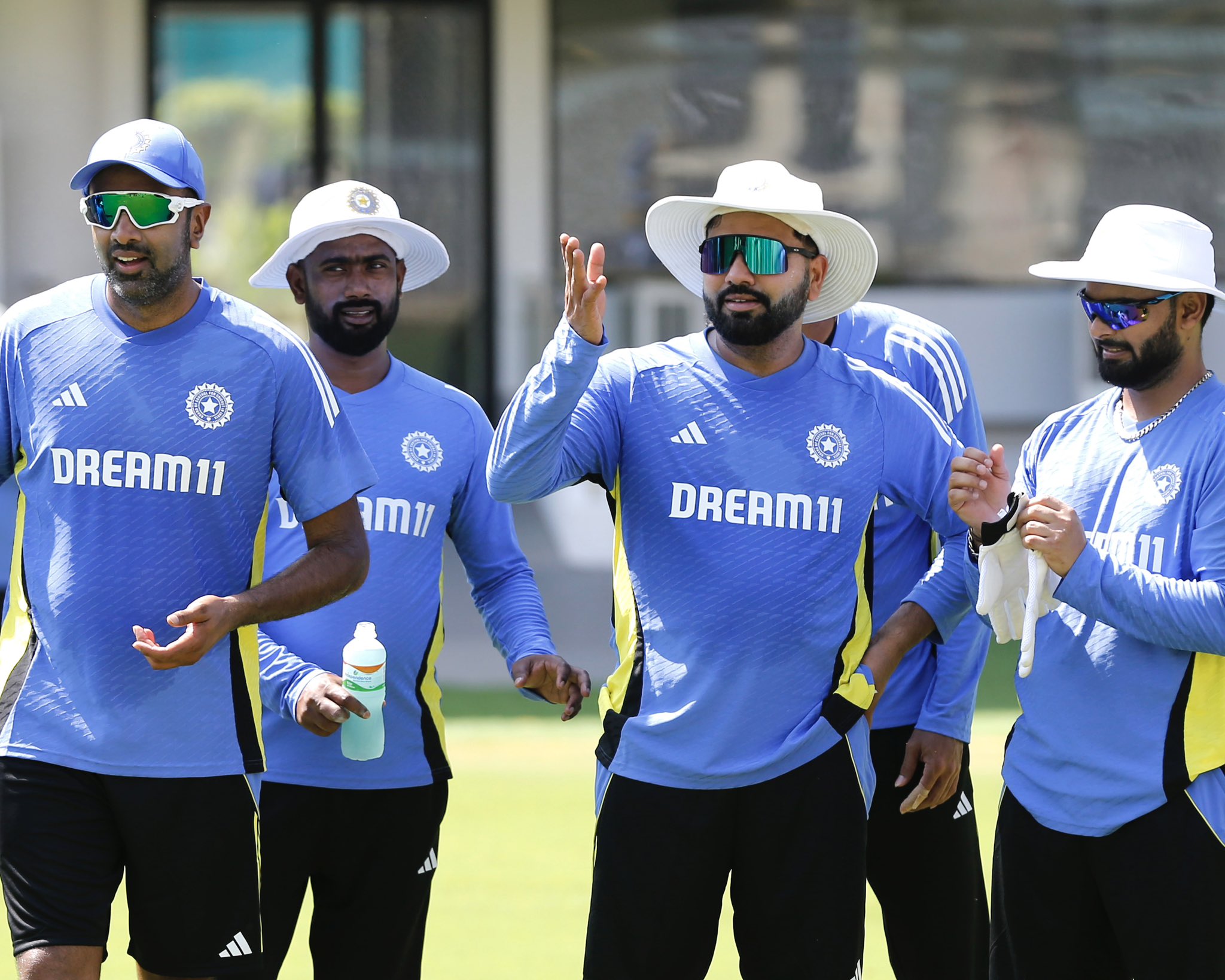International
Why are India batsmen vulnerable against spin

Indian batting, led by Rohit Sharma and Virat Kohli, has been vulnerable against spin for a long time now. It is India’s bowling that has been carrying India with Ashwin and Jadeja even chipping crucially with the bat
 Khurram Habib
Khurram Habib
27 Oct, 2024
India succumbing to New Zealand left-arm spinner Mitchell Santner has once again brought the focus on the batsmen’s inability to play spinners. This isn’t the first time in recent times that India have failed to play foreign spinners.
Earlier this year in January, England left-arm spinner Tom Hartley picked seven wickets in an innings as India failed to chase 233 runs in Hyderabad. Before that, in March last year, Steve Smith-led Australia turned the tables on India on a spin-friendly surface in Indore, winning the Test. India could make just 109 and 163 in the two innings there. Nathan Lyon took 11 in the match and Matthew Kuhnemann took a fifer.
It won’t be wrong to say that India should now be preparing flat pitches instead of spin-friendly surfaces especially against teams that can exploit spin-friendly conditions and expose Indian batsmen’s weaknesses.
This weakness was in the making.
Former India fast bowler Irfan Pathan on Saturday tweeted, “If we want to improve in playing spin, put a bit less emphasis on side-arm practice!”
It highlighted an important fact that few people outside of cricket team and cricket media know. The use of side-arm, the equipment for throwdowns, has become an integral part of every practice. There are throwdown specialists with teams including with India who are paid for it.
WATCH | Analysis of second India-New Zealand Test and where the Indian team management blundered
Former India left-arm spinner Venkatapathy Raju says that the tight calendar in which players are expected to play a lot, especially T20s, has forced many top players including Rohit Sharma and Virat Kohli to miss domestic cricket where a lot of skills against spinners were developed.
“I agree. We are concentrating too much on throwdowns. That is okay when you are touring abroad. Throwdowns are one-way, you know where the ball is coming. They should not be the main weapon when you are practicing,” said Raju to www.thedelhijunction.com.
He added that in their days they would face 10-15 balls through throwdown but then practice against local bowlers where spinners would be the key.
“Muscle memory plays a key role, and it is into hitting [nowadays]. You are practicing lofted shots. When you see that length, you go and hit the ball. It is not their mistake. Everybody wants to play T20. It is commercially more viable. In T20, you can’t defend.”
The focus should be on domestic cricket with top players also playing it. Back in the day, Raju recalled, the domestic cricket matches were less which allowed proper preparation of pitches that could also support spin bowlers.
“If you go back to the 80s and 90s, there were less matches due to zonal structure. Pitches could be prepared. Every team had good spinners. All international cricketers used to play domestic cricket,” he added.
“The amount of cricket India play, especially T20s, the players hardly get to feature in domestic cricket. Even if they play it is either on batting or seaming tracks. They don’t have time to prepare tracks. There are so many matches, age-group, women’s matches and white ball. Even Ranji Trophy has so many games nowadays.”
There is a theory nowadays that since players are playing all around the year, they need to rest and not play domestic cricket.
This theory was buttressed by India’s invincible record at home over the last 10 years. Little did people realise that the art of playing spin had suffered across the world and that India’s wins were built largely on pitches that aided turn from Day 1 and opposition’s – especially England’s -- weakness. There were two outstanding spinners in R Ashwin and Ravindra Jadeja who could make the best use of these pitches through control and intelligence.
It was only a matter of time before a team would crack the code and these spinners, entering their twilight years, would fall against them. That team has turned out to be New Zealand. Tom Latham is a quintessential Test player and an intelligent captain. There are the likes of Rachin Ravindra who know how to use their feet. Besides, there is the experience of Mitchell Santner which came in handy. Latham went against the common perception of not playing Santner in Test matches and using him only for white-ball cricket.
India skipper Rohit Sharma was justified in admitting that losing a home series after 11 years isn’t that big a deal. Good things always come to an end.
But the fact is that India batsmen have been vulnerable against spin for a long time now. It is India’s bowling that has been carrying India with Ashwin and Jadeja even chipping crucially with the bat.
None of the batsmen, especially top ones, are seemingly preparing religiously or with a plan despite knowing that they are vulnerable.
Back in 1998 when Shane Warne was the world conqueror, Sachin Tendulkar prepared at nets with Laxman Sivaramakrishnan bowling to him from the rough. He also played for Mumbai against visiting Australia in warm-up to trial his preparation. He succeeded in it by smashing 204. That demoralised the Aussie spinner before the start of the Test series.
Expecting a top India player to feature in domestic games nowadays seems far-fetched.
“Domestic cricket has to be competitive. Players aren’t playing domestic cricket. Top players like Kohli, Rohit should get a feel by playing domestic cricket. That gives you an idea on how to improve,” added Raju.
“Even in Sri Lanka, we weren’t prepared for ODIs and lost as the players went from T20I mode.”
Tags : India cricket, Rohit Sharma, Virat Kohli, New Zealand, R Ashwin, Ravindra Jadeja, T20, Mumbai, Wankhede Stadium, Pune, Bengaluru